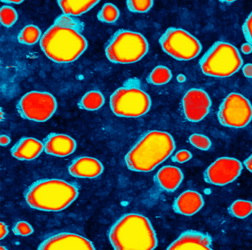Two-in-one measurement system for novel nanowires
Semiconductor nanowires are extremely thin wires (diameters on the scale of 20–80 nanometres (nm)) that can have lengths up to several micrometres. This makes them particularly interesting for applications in optoelectronics, sensors, biomedicine and energy. Exploitation requires careful characterisation and rational design yet, until now, measurements of structure and electrical properties could only be done separately. Scientists have now combined approaches in a single setup to enable the simultaneous measurement of atomic surface structure, local electronic properties of individual nanowires, and global electronic properties of a device made of such wires. EU funding of the NANOWIREDEVICESTM project enabled researchers to use scanning tunnelling microscopy (STM) and scanning tunnelling spectroscopy (STS) together with external voltage application to obtain information on chemical and atomic composition and structure as well as charge distributions and device performance. Researchers prepared nanowires and conducted STM experiments on various compositions, demonstrating observation of atomic-scale crystal structure while moving along the length of very large diameter (more than 250 nm) nanowires. STS on freely suspended nanowires has been optimised to yield important information about the transition in crystal structures along the length of a wire. Ultra-high vacuum (UHV) conditions are favourable for nanowire surface cleaning. Experiments to measure conductivity and transport have yielded very promising results with no device breakdown observed until about 150 degrees Celsius above the required cleaning temperatures. Investigators developed the setup to conduct combined measurements using STM/STS and atomic force microscopy (AFM), and used it to study individually contacted nanowires. In addition, scientists used a combined STM/AFM probe tip to both influence local conductivity and simultaneously measure resulting current through the device. The technology delivered by NANOWIREDEVICESTM scientists will play a pivotal role in speeding up the development time of novel components and devices.



